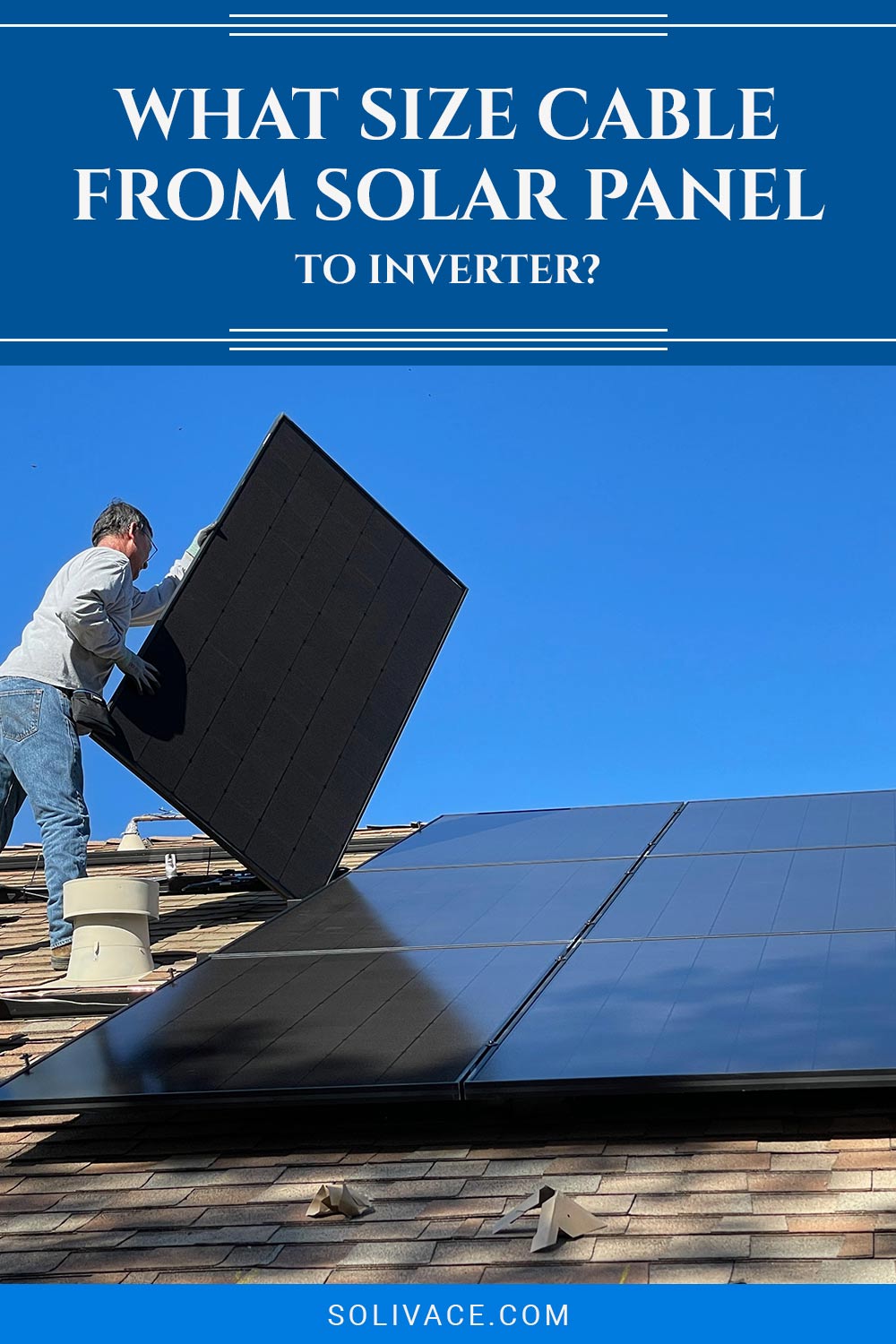What Size Cable From Solar Panel To Inverter?
We may earn commissions for purchases made through links on our site. Learn more on our about us page.
Thinking about installing a solar panel system on your own? Confused about all the different cable sizes and types there are out there for what seems like a simple circuit?
While you might think that you simply need one set of cables for solar panels to an inverter and from the inverter to a group of batteries, this isn’t the case.
Instead, 10 American Wire Gauge (AWG) cabling is widely considered to be the norm when connecting solar panels to an inverter.
Keep reading to learn more about what cables you will need to ensure your new solar power system works correctly and safely.

What Types of Cables There Are?
There are a couple of different types of cable that can be used to hook up a set of solar panels to an inverter to harvest the free energy sent to us by the sun. Not all of them are made equal, though.
Below are a couple of comparisons between types of cables:
- Solid wire versus stranded wire
- Pure copper wire versus coated wire (copper-coated aluminum or aluminum-coated copper in most cases)
- 0 AWG cable versus 10 AWG cable
The different types of cable make them useful for different purposes or can be a way to save money on components.
How Can You Know Which One You Need?
Although 10 AWG cable is typically used for solar panel applications, you may find that you have different needs than the average solar consumer.
Thankfully, plenty of free resources on the Internet can walk you through exactly which cabling you need based on metrics such as distance from solar panel to an inverter or continuous wattage.
Alternatively, you could consult with a solar panel specialist to determine which type of cabling would make the most sense for your situation before going ahead with purchasing all the components and doing any work on your own.
Does a Bigger Cable Mean More Energy?
You might be led to believe that a bigger cable means more energy, and you would be correct for the most part, but that doesn’t mean it makes sense for your solar panel system.
A bigger cable does indeed have a higher current-carrying capacity than a wire of a smaller diameter. You can think of it as a pipe for water in a way. The bigger the pipe, the more water can pass through it in any given period than a smaller pipe.
However, a large pipe with a small amount of water can have trouble efficiently moving the liquid from point A to point B, which is where a smaller pipe might be more useful.
This means that a bigger cable doesn’t necessarily mean you will get more solar energy – that depends on the type and number of solar panels you have.
How Can You Tell if You Have the Wrong Size Cable?
Perhaps the easiest way to tell if you have the wrong size cable is to hook everything up and see if it works properly. If you are not achieving the power production you expect to see because of your solar setup, it can indicate that there is a problem, probably with the cables.
For example, say you have four 300W solar panels, you could expect at least 1000W coming in. If, however, you are only getting around 200W despite being in full sun, you could have a cable issue that isn’t transferring all of the generated power properly.
It generally isn’t recommended to connect everything and test this way, though, because it can easily become a safety hazard. Instead, consult authoritative sizing charts and professionals to see what you will need for your specific system.
What is the Common Size?
The most common size cable used for connecting solar panels to an inverter is the 10 AWG cable. The AWG sizing system indicates a wire’s diameter (and therefore cross-sectional area) based on how often it has been put through a wire stretching machine or similar.
A 0 AWG cable hasn’t been put through such a machine and will have a standardized 0.325-inch diameter. A 10 AWG cable has been stretched or thinned by a machine ten times to achieve a 0.102-inch diameter.
The 10 AWG size is often used because:
- The cable is thin enough to be flexible
- There is a low voltage drop index over distance
- The cable is large enough not to be a safety concern
- The cable and its insulation can resist things like extreme temperatures, weather, and pests
Final Thoughts on Cable Sizes
While your personal needs may vary based on the size of your solar panel system and how you plan to set it up, the conventional cable size for connecting solar panels to an inverter is 10 AWG size.
This cable has many benefits that make it safe and easy to work with. Just be sure to avoid cutting corners with the cost of such cabling. Anything that isn’t properly insulated or 100 percent copper can have disastrous consequences.
It is well worth investing in high-quality cable and solar components to make a lasting system to enjoy for years to come.



Leave a Reply
You must be logged in to post a comment.